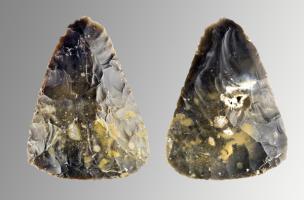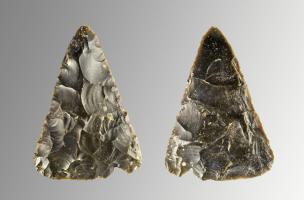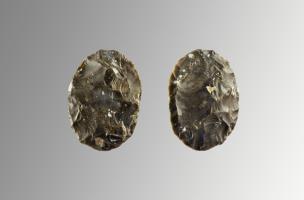You are here
Neanderthal News: the Saint-Amand-les-Eaux biface workshops
Numerous Neanderthal artifacts are currently being excavated by a team from the Inrap at Saint-Amand-les-Eaux (Nord). The excavation, taking place, in advance of the construction of a shopping centre, is curated by the Regional Archaeology Service, (DRAC Nord-Pas-de-Calais). An exceptionally well preserved human occupation around 50,000 years old has been found.
During the last glacial period, in an environment similar to that of the Siberian taiga and during a time when temperatures rose slightly in the region, Neanderthals occupied a hillside dominating the Scarpe Valley. At Saint-Amand-les-Eaux, the main activity of this prehistoric group was the production of bifaces, a tool characteristic of this period.
Rare stone knapping workshops
Geometric forms and high technical skills
The sixty bifaces thus far discovered have varied forms: triangular, oval, cordiform (heart-shaped), etc. Their morphology, and sometimes their small size, are characteristic of one variant of the Mousterian culture. In particular, their perfect symmetry demonstrates the great mastery and technical skill of these Neanderthals in the production of bifaces. These tools served many purposes, and have been called prehistoric "Swiss Army knives".
Site function
Around 50,000 or 45,000 years ago…a date within 5,000 years?
Following the discovery in 2005 at Caours (Somme) of a Neanderthal butchery site dated to 125,000 years ago, Saint-Amand-les-Eaux sheds new light on the presence and activities of Neanderthals in northwest Europe and contributes to our knowledge of stone tool production during this period.




Mahaut Tyrrell
Media communication
Inrap, media partnerships and relations department
+33 (0)1 40 08 80 24
mahaut.tyrrell [at] inrap.fr
Pierre de Portzamparc
Cultural development and communication
Inrap, direction interrégionale Nord - Picardie
06 73 73 30 33
pierre.de-portzamparc [at] inrap.fr


